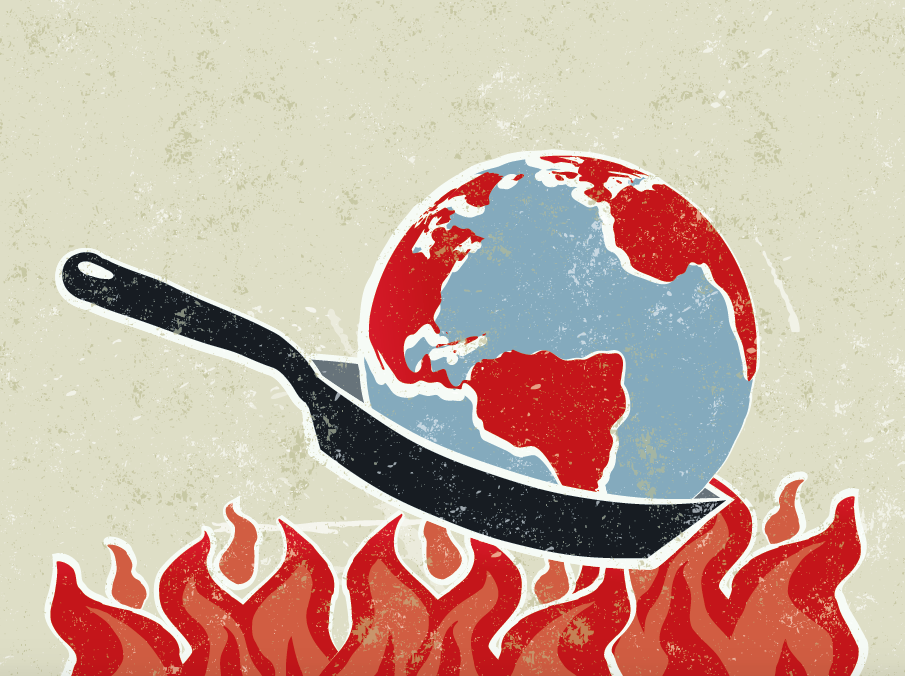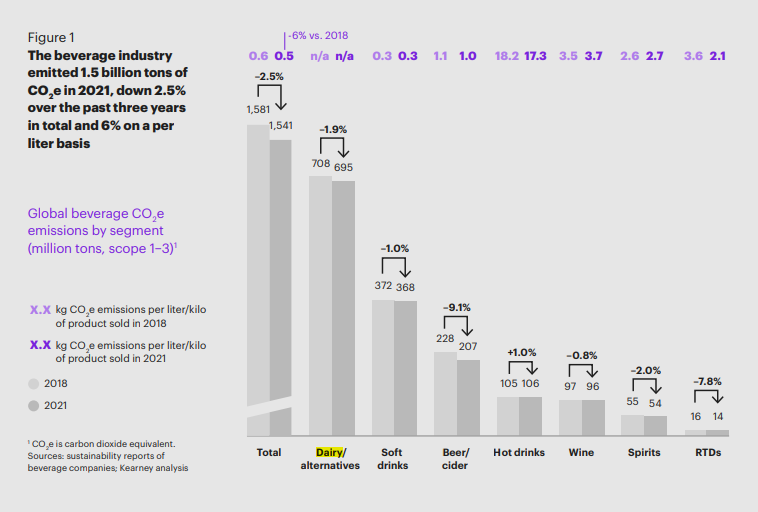
Global beverage industry lags behind green targets
A new report has said the global beverage industry could achieve its emissions reduction goals by 2028 if a clear plan is put in place. However, it is not currently on course to meet either its 2030 or 2050 greenhouse gas (GHG) targets.
According to a new report from consultancy firm Kearney, the global drinks industry – including non-alcoholic and alcoholic products – emitted 1.5 billion tons of CO2e in 2021, accounting for 3.8% of all global CO2e emissions. Alcohol, including wine, beer, spirits, cider and RTDs, contributes just under a third of those emissions.
The industry has made some headway. Emissions per litre for all beverages (including alcohol, softs, dairy and coffee) have declined over the past few years, at -6% kg CO2e, between 2018 and 2021. However, this still puts the global beverage industry quite severely behind its goals. Based on the current trajectory of 0.7% reduction per year, the industry will miss both its 2030 and 2050 targets, and would need to increase its current reduction rate 11-fold in order to meet them.
“The threat to share prices is real,” the report reads. “On 9 February 2023, activist investor ClientEarth filed a lawsuit against Shell plc’s 11-person board of directors, alleging they had breached their legal responsibilities under the Companies Act by failing to adopt and implement an energy transition strategy aligned with the Paris Agreement.
“If activist investors can attack the petroleum industry, what is to keep them from filing similar complaints against the board of leading global beverage industry firms? And, if they did, what evidence could the industry muster in its own defence?”

Alcohol plays a key part in this picture. According to the figures, wine was responsible for 96 million tons of CO2e in 2021, a reduction of 0.8% on 2018. However, in terms of emissions per litre/kilo (tons, Scope 1-3), it actually rose from 3.5 to 3.7 million during the same timeframe.
The dairy industry alone accounted for 45% of total beverage industry emissions (0.7 billion tons of CO2e). Together, dairy products, soft drinks, beers and ciders made up more than 80% of all emissions.
“Wine and spirit producers have seen their relative emissions increase while beer, cider and RTDs producers have been most efficient in reducing their carbon footprint (8-9% reduction since 2018). Like wine and spirit companies, tea and coffee producers have been struggling to achieve their targets, increasing emissions by 1% the past three years,” said the report.
The lack of progress is not a reflection of the industry’s reticence to change, the report notes. Rather, it is a lack of clear direction and long-term strategies to address a complex problem. If a clear plan were implemented, the industry could meet current targets as early as 2028.
Kearney recommends a holistic approach, encompassing Scope 1-3 emissions. This includes implementing sustainable practices within their operations and clearly communicating their efforts to consumers.
With regard to packaging materials, reduction methods should be clustered into three categories: reduce, redesign and reuse.
Raw materials (crops and soil, etc) currently account for 35% of GHG, packaging accounts for 23%, operations (equipment, warehousing, etc) 11% and transport 13%. All but the first of these fall under Scope 3 emissions.
By implementing a holistic set of methods, beverage companies can achieve their net-zero targets by 2039 or earlier in an ‘aggressive’ scenario, Kearney said, or by 2045 under a more realistic, less stringent timeline.




